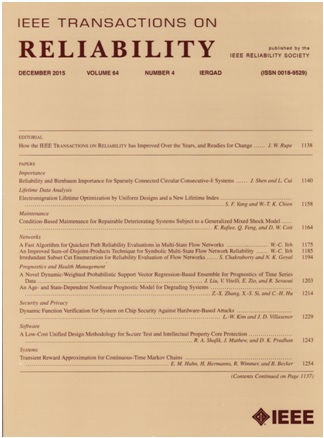用串联电压同步性推断锂离子电池的历史滥用操作
IF 5.7
2区 计算机科学
Q1 COMPUTER SCIENCE, HARDWARE & ARCHITECTURE
引用次数: 0
摘要
为保证电动汽车的安全,严禁对电动汽车安装的锂离子电池进行滥用操作。本文提出了一种智能策略,通过回顾性分析对lib的历史滥用操作(HAOs)引起的损伤与电行为的关系来推断历史滥用操作(HAOs)。首先,使用改进的相关系数公式感知串联模块中对等锂电池之间的电同步性;然后将同步序列转换为递归图图像(rcpi)和格拉曼角场图像(GAFIs),这些图像可以提供有关跨时间自相关性的丰富纹理。其次,基于分层聚类算法,进行先导测试,初步检验不同HAOs对应的图像的可分性;最后,利用GoogLeNet模型对图像特征与HAO细节之间的因果关系进行建模,从而推断出潜在HAO的类型和强度。通过对锂离子电池施加过电压、过热和振动等弊端,获得了一个真实的数据集。实验验证表明,该策略通过提供有效和可靠的HAO细节推断,在回溯LiBs上的HAOs方面表现良好。使用RCPIs对HAO类型评估和严重程度评估的准确率分别达到77%和76%左右,使用GAFIs对HAO类型评估和严重程度评估的准确率分别达到79%和76%左右。本文章由计算机程序翻译,如有差异,请以英文原文为准。
Inference of Historical Abusive Operations on Li-Ion Batteries Using Series Voltage Synchronicity
To guarantee the safety of electric vehicles (EVs), abusive operations should be strictly prohibited for EV-mounted li-ion batteries (LiBs). This article proposes an intelligent strategy to infer the historical abusive operations (HAOs) on LiBs by retrospectively analyzing the relationship between HAO-induced damages and electrical behaviors. First, the electrical synchronicity among the peer LiB cells in a series module is perceived using an improved correlation coefficient formula; then the synchronicity sequences are translated into recurrence plot images (RCPIs) and Gramian angular field images (GAFIs) that can provide a wealth of textures regarding cross-time autocorrelations. Second, based on the hierarchical clustering algorithm, a pilot test is performed to preliminarily examine the separability of these images corresponding to different HAOs. Finally, the GoogLeNet model is employed to model the causality between image features and HAO specifics, whereby the type and intensity of potential HAO can be inferred. A realistic dataset is obtained by inflicting abuses such as overvoltage, overheat, and vibration on LiB cells. Experimental verifications show that the proposed strategy performs well in backtracking the HAOs on LiBs by providing effective and reliable inferences on HAO specifics. The accuracy rates of HAO type assessment and severity evaluation can achieve about 77% and 76% using RCPIs, and about 79% and 76% using GAFIs, respectively.
求助全文
通过发布文献求助,成功后即可免费获取论文全文。
去求助
来源期刊

IEEE Transactions on Reliability
工程技术-工程:电子与电气
CiteScore
12.20
自引率
8.50%
发文量
153
审稿时长
7.5 months
期刊介绍:
IEEE Transactions on Reliability is a refereed journal for the reliability and allied disciplines including, but not limited to, maintainability, physics of failure, life testing, prognostics, design and manufacture for reliability, reliability for systems of systems, network availability, mission success, warranty, safety, and various measures of effectiveness. Topics eligible for publication range from hardware to software, from materials to systems, from consumer and industrial devices to manufacturing plants, from individual items to networks, from techniques for making things better to ways of predicting and measuring behavior in the field. As an engineering subject that supports new and existing technologies, we constantly expand into new areas of the assurance sciences.
 求助内容:
求助内容: 应助结果提醒方式:
应助结果提醒方式:


